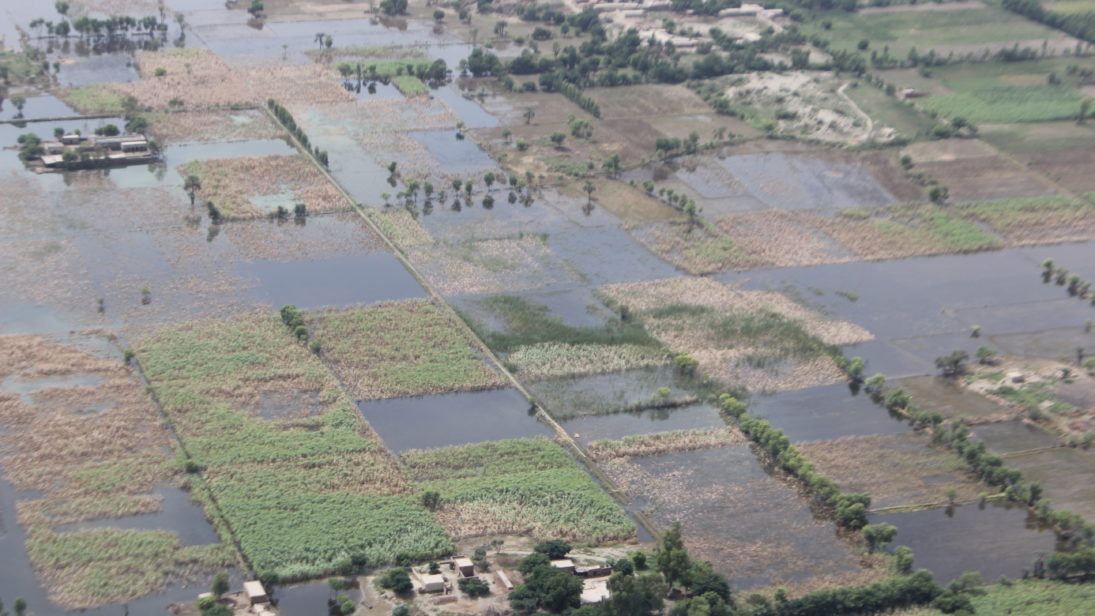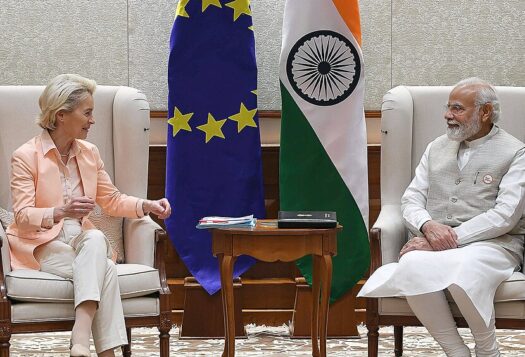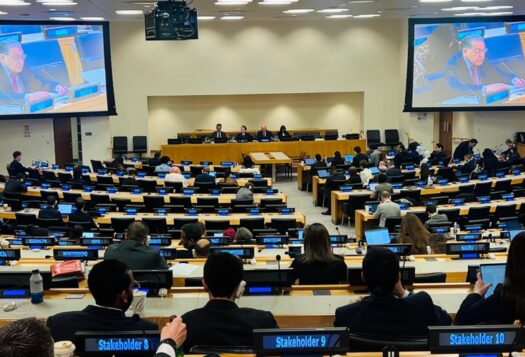
Between July and September this year, 235 Pakistanis lost their lives and another 169 suffered injuries due to the current monsoon spell. On the other hand, approximately 134 civilians have lost their lives in terrorism-related incidents since the start of this year. This represents the first time in more than a decade that casualties from monsoon rains have surpassed civilian deaths caused by terrorism and the second time within five years that extreme weather-induced casualty figures have surpassed terrorism-related ones.
As monsoons grow stronger and related death tolls rise due to climate-change, extreme weather events have an increased impact on livelihood in Pakistan. Numbers suggest that climate change presents a more pronounced challenge to the safety and security of Pakistani civilians than terrorism. Climate change is also a “threat multiplier” that can activate latent potential national security threats such as poverty, persecution, internal population displacement, resource scarcity, and inter-provincial rivalry.
Climate Change as a Major Threat
Climate change is a threat multiplier that can activate latent potential national security threats such as poverty, persecution, internal population displacement, resource scarcity, and inter-provincial rivalry.
2019 may represent the lowest number of terrorist incidents and civilian fatalities in two decades. In 2000, civilian casualties from terrorism stood at 137. Death tolls decreased from a high of more than 2,700 in both 2012 and 2013 to 134 civilians so far this year. The number of suicide bombings also declined to 8 incidents in 2019 (19 in 2018) from a high of 85 in 2009. However, any progress Pakistan has made in terms of counterterrorism or security may be gravely at risk if Pakistan does not adopt and implement climate change mitigation and adaptation strategies. The country has already seen climate change induced floods, deadly heat waves, droughts, and unseasonal rainfalls.
In financial terms, environmental degradation and natural disasters, both compounded by climate change, cost the country 6 percent of its GDP. Similarly, climate change may have contributed to the 2010 floods that cost the country upwards of USD $40 billion. Climate change can also prompt internal migration, declining agricultural productivity, water scarcity, increased risk of natural disasters such as heat waves and floods, political instability, and violence. Pakistan is particularly vulnerable to these threats given its overwhelming reliance on agriculture, young and growing population, poor norms governing resource use and distribution, and fragile political system.
Pakistan: Civilian Fatalities Related to Monsoons Surpass Civilian Fatalities from Terrorism
Displacement of Population
Climate change is likely to cause widespread displacement of Pakistanis. The country is poorly-equipped to handle relocation to large cities, which has implications for Pakistan’s national security. A 2016 report warned climate-related stress could push as much as 50 percent of Pakistan’s rapidly growing population to urban areas in the next 10-15 years, and close to 70 percent by the end of the century. Floods, droughts, changing rainfall patterns, and higher temperatures that impact agricultural yields are among major climate change-related factors that can increase rural-urban migration.
These figures are alarming: urban centers in the country lack the institutional capacity to manage climate change shocks. Karachi is already ranked among the ten least livable cities in the world and Lahore is likely to face a water crisis in the immediate future. Even the federal capital Islamabad has poor living standards. Hardly a city in the country is able to match the World Health Organization’s prescribed limits in terms of air quality.
Pakistan is woefully under prepared for further relocation to these cities. In the absence of environmentally sensitive urban design approaches and focused climate change adaptation, urban centers in the country simply cannot cope with such a migrant influx. It is frightening to contemplate the political instability and social unrest such migration and poor urban absorption capacity would cause. A 2018 World Bank report predicted that Pakistan is expected to experience a decline in living standards across its territory by 2050 under both climate sensitive and carbon intensive scenarios. In other words, under both scenarios, where global carbon emissions are reduced or if the world fails to cut back on emissions, Pakistan will experience an impact. Sindh, the second most populated and economically productive province of the country is further predicted to experience the most severe impact on living standards under the latter scenario.
These poor living standards may lead to poverty, ghettoization, disease, and crime. Under resource scarce conditions, markers of social identity such as gender, religion, ethnicity or socio-economic background frequently become more pronounced as well and may lead to further persecution or even violence. Such conditions exacerbated by climate change may provide an ideal breeding ground for organized crime, militant groups, dissident movements, terrorism, and potentially violent political uprisings.
Resource Scarcity
Under resource scarce conditions, markers of social identity such as gender, religion, ethnicity or socio-economic background frequently become more pronounced. These conditions are exacerbated by climate change and breed violence
Climate change will also fuel conflict over scarce resources, threatening Pakistan’s national security. Tensions between provinces over resource allocation, inequalities between ethnic groups, population displacement, uneven and disordered urbanization, food insecurity, and poverty can create an environment that increases the likelihood of conflict and threatens to undo the progress Pakistan has achieved in combating terrorism.
Food is one of the main resources impacted by scarcity, and climate change also threatens food security. Pakistan’s agriculture is highly vulnerable to climate change, and yet the agricultural sector employs over 45 percent of the labor force, and accounts for 21 percent of Pakistan’s GDP. The country’s most common agricultural techniques are outdated, highly inefficient, utilize the lion’s share of freshwater resources, and are overwhelmed due to misplaced priorities in terms of the types of crops grown.
Add extreme weather events such as floods, droughts and changes in rainfall patterns to the mix and agricultural yield significantly declines, leading to food insecurity. Food insecurity and sharp increases in migration to urban areas were among the major factors that led to the Syrian civil war. Yet, climate change is simply not seen from a national security perspective in policymaking circles within Pakistan.
In terms of regional security, conflict with India over water resources is a distinct possibility as environmental cooperation between the two countries, both highly vulnerable to climate change, is woefully limited and hijacked by other political disagreements such as counterterrorism and the Kashmir dispute. The United Nations Security Council has itself acknowledged the relationship between climate change and conflict. The U.S. Department of Defense has also deemed climate change a “threat multiplier.”
Although the state of current research over the matter in the South Asian context is currently limited, it is likely that climate change will exacerbate existing tensions in the region.
New Policies are Necessary
Pakistan is globally reputed as a country beset by security challenges and terrorism, but the world has not caught up with the fact that its counterterrorism policies have indeed yielded significant dividends, while climate change is now the primary challenge. Coverage in the media and discussion panels at influential think tanks both within and outside the country frequently focus on security challenges Pakistan faces from non-state actors, with little to no focus on the menacing threat posed by climate change and environmental degradation.
Within the country, a small cadre of voices are sounding alarm bells with increasing desperation, but the threat is simply not being taken as seriously it should be by policymakers, academia, the media, civil society, and even the public at large.
Any medium- to long-term security or development policy and political discussion within the country, ranging from urban development, agricultural planning, poverty alleviation, health, crime, resource allocation and even diplomacy, needs to include climate adaptation strategies as a core component. Failure to do so will be catastrophic.
Editor’s Note: Scholars are increasingly paying attention to the security impacts of climate change, however, this nexus remains relatively understudied, particularly in South Asia. Climate change-induced events may cause large-scale migration and impact the availability of resources, which in turn could stir
***
Image: Wikimedia Commons


